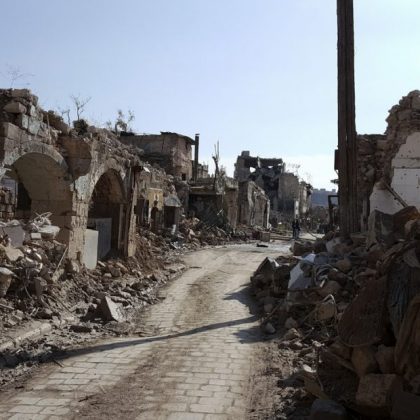How did meat provision work in the nineteenth-century city?
Supplying food presents a major problem for urban history, for cities, beyond a certain size, cannot feed themselves. Provisioning meat in particular represents a critical juncture, because no other food item was so deeply and, in so many ways, tied to urban modernity. This recognition had sparked an interest to propose a conference session on meat and the nineteenth-century city at the 2014 European Association for Urban History Meeting. The panel attracted many responses, the product of which is this special section in Urban History.
Drawing on our work on meat provisioning in New York and Copenhagen, we organized our conversation around five key themes, including city and country relations, technology and infrastructure, geography and urban space, government and regulation, and changing nutritional standards. One immediate observation was that supplying meat to nineteenth-century cities involved a profound restructuring of the relationship between city and country. Contrary to the widely held view that the modern city entailed a sharp distinction between the two spheres, accelerating urbanization in fact intensified their connections. A wide array of technological networks reconfigured interrelations between cities, regions, and hinterlands, from the cattle ships and electrically cooled trains for dead meat to the sliding hooks used for dismembering animal bodies in a precursor to the modern assembly line.
Moving on to urban space, we noted the competing actors and claims that shaped local geographies. Determining where meat belonged in the modern city involved numerous stakeholders, with city governments asserting their police power, health reformers pushing for sanitary measures, butchers and others in the industry supporting or obstructing reforms, investors seeking profit from real estate, and changing consumer preferences altering the landscape of household provisioning. Most visible, with increased government oversight and the industrialization of meat production and processing, massive abattoirs emerged to improve efficiency and sanitary standards, while at the same time, relegating the mass killing of animals out of sight into the outskirts. Further, even as access to meat became more widespread with a generally rising trend of meat intakes, city dwellers became more oblivious and ambivalent about meat production, while public spaces gradually emptied of animals, including cattle, pigs and horses.
The articles in this special section engage these central themes, while exploring the layered geographies of urban meat provisioning from far-reaching supply chains to meatpacking plants and neighbourhood shopping. They also advance our knowledge of this critical theme by introducing new questions and approaches, and focusing on hitherto less studied locations. From a meticulous reconstruction of Barcelona meat consumption standards by Guàrdia, Oyón, Garriga, and Fava, through the fascinating narratives of the constructions of the Moscow abattoir by Mazanik and the Copenhagen Meat City by Thelle, and to the analysis of the bio-politics of Buenos Aires meat production by López-Durán and Moore, this collection invites for a rich reflection on the entire spectrum of nineteenth-century urban meat provisioning systems.
View all articles in the Urban History special section on Meat in the Nineteenth Century here
Main image: Cover Urban History Volume 45, Issue 2
Image Butcher at Vesterbrogade, 1870s. The Royal Library, Copenhagen





